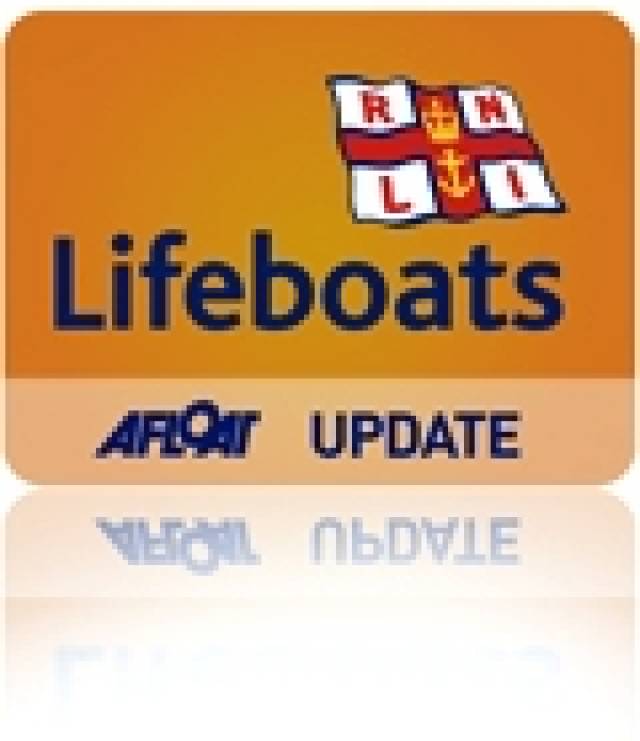#RNLI - Clifden RNLI officially named its new Atlantic 85 lifeboat, Joyce King, at its station in the Connemara coastal town of Clifden in a special ceremony yesterday (Saturday 9 November).
John Coyle, chairman of the Irish council of the RNLI, accepted the lifeboat on behalf of the institution before handing her over into the care of Clifden Lifeboat Station.
Coyle paid tribute to the donor John Charles King, who had generously funded the lifeboat through a gift left in his will.
King - who hailed from Lincolnshire in England - funded the lifeboat, which has been in service in Clifden since June, in memory of his wife Joyce.
Jackie O’Grady, chair of the Clifden RNLI lifeboat management group and a former honorary secretary at the station, then officially named the lifeboat during the ceremony.
The new state-of-the-art Atlantic 85 lifeboat, at 8,4m in length and weighing 1.8 tonnes, was introduced into the RNLI fleet in 2005. Improvements on its predecessor include a faster top speed of 35 knots, radar, provision for a fourth crew member and more space for survivors.
Since the new lifeboat went into service in Clifden, it has had seven call-outs and 20 people have been brought to safety.
Clifden RNLI lifeboat operations manager John Brittain said the naming ceremony and service of dedication was a special occasion in the history of the lifeboat station, adding that the volunteer crew was grateful to King for his generous legacy.
He said the RNLI could not operate its lifeboats without the dedication of volunteer lifeboat crew.
"The 37 men and women currently on our crew in Clifden give 100% at all times. Their commitment and on-going attendance for training both here and at the lifeboat college means that they are highly proficient in the operation of their lifeboats.
"Further testament of the dedication of the crew is their knowledge that they may risk their own lives in the service of others. There is nothing greater that a person could offer and they deserve nothing less than the best lifeboat, equipment and training that money can buy."
Brittain went on to pay tribute to the vital support provided by the volunteers who support the crew.
"However, the lifeboat crew and I are only one part of this station. I must mention our operation team, supporters and fundraisers who volunteer their time and efforts and do so much for Clifden RNLI. These are people of all ages who give what time and money they can – thank you."
The RNLI established a lifeboat station in Clifden in early 1988 when a C-class lifeboat was put on service for one season’s evaluation. The following year Clifden RNLI became fully operational as a summer season only lifeboat station.
In 1992 part of a building used for housing the lifeboat was demolished and a new purpose-built building was constructed in order to provide adequate facilities for the lifeboat and crew. As well as providing an area for the C-class lifeboat and launching vehicle, it included a workshop and crew facilities.
In 1997, an Atlantic 21 lifeboat was placed on service and a new boathouse for the lifeboat and a tractor was completed in August 1998. A new Atlantic 75 B-class lifeboat was placed on service in 1999 and remained stationed until June when it was replaced by the Atlantic 85.
Fast, manoeuvrable and reliable, the B-class operates in rough weather conditions, capable in daylight up to force seven and at night, to force six winds. The new lifeboat, an Atlantic 85, is the latest version of the B-class.
A crowd of well-wishers turned up to see the lifeboat officially named with a bottle of champagne poured over the side of the boat before it launched at the end of the ceremony.
Clifden RNLI lifeboat crew member David Barry welcomed guests and opened proceedings while Lavinia Joyce from the Clifden RNLI fundraising branch delivered the vote of thanks. Father James Ronayne and Reverend Stan Evans lead the service of dedication.































































